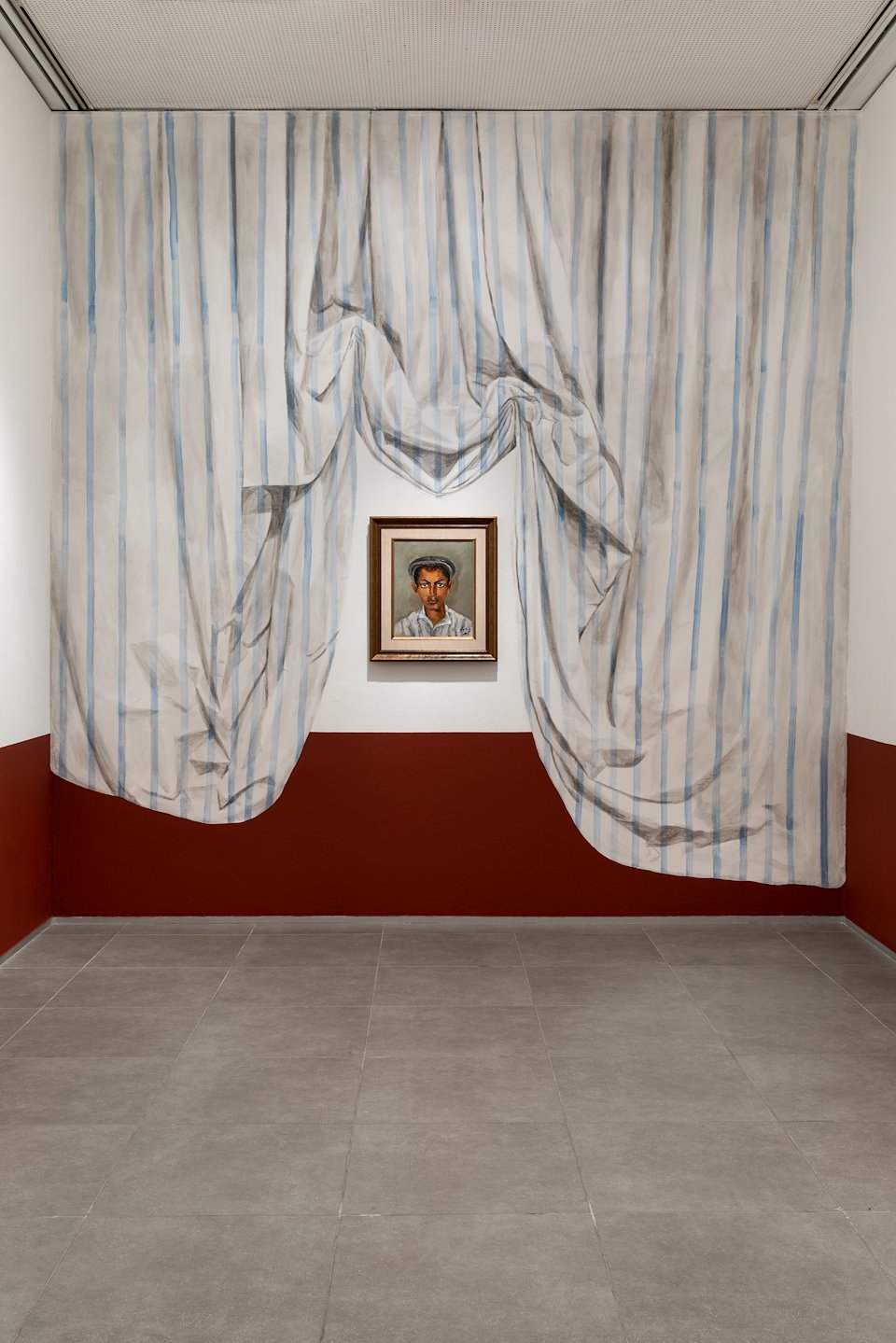
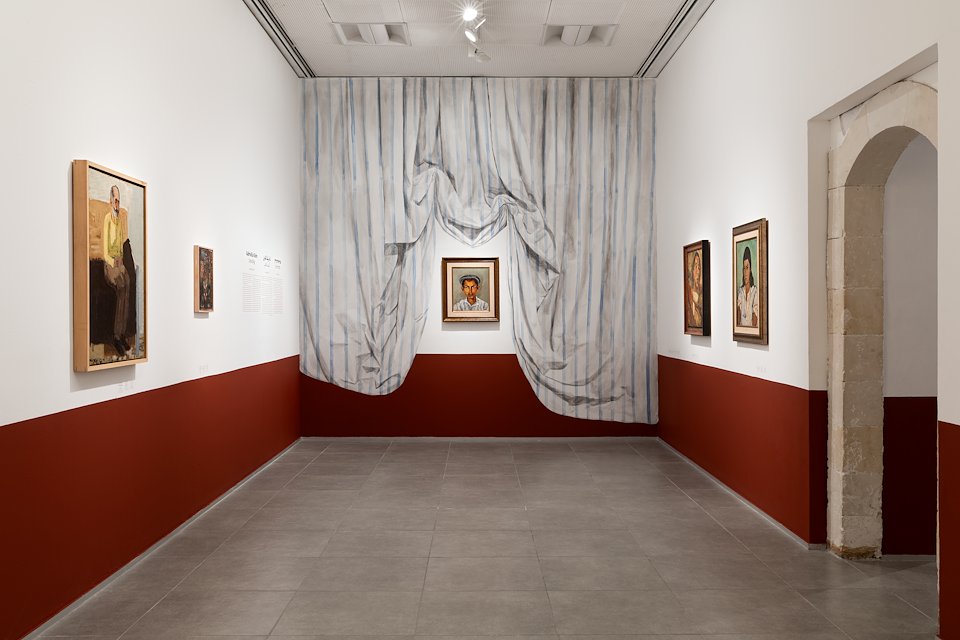
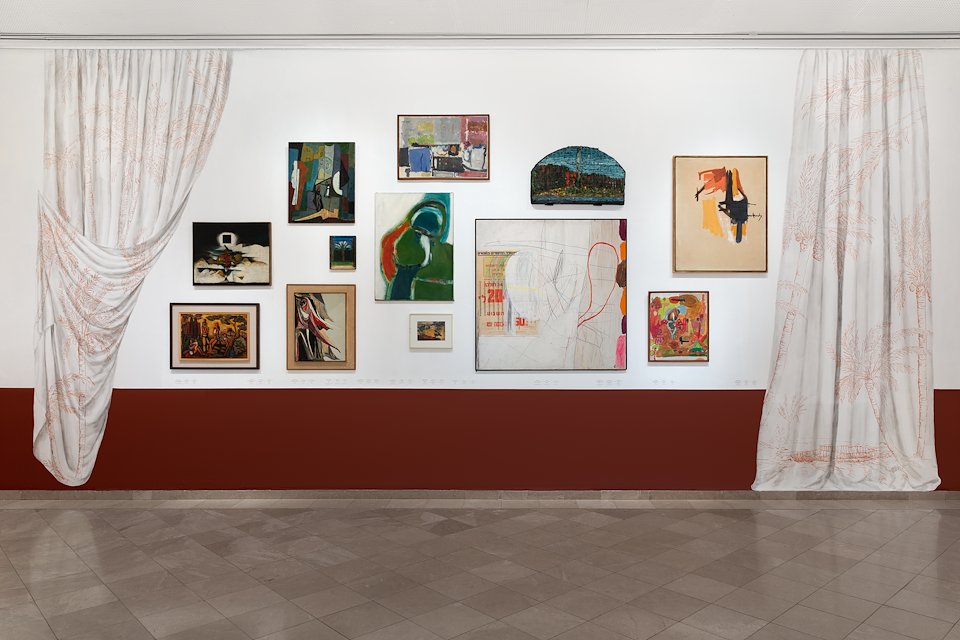

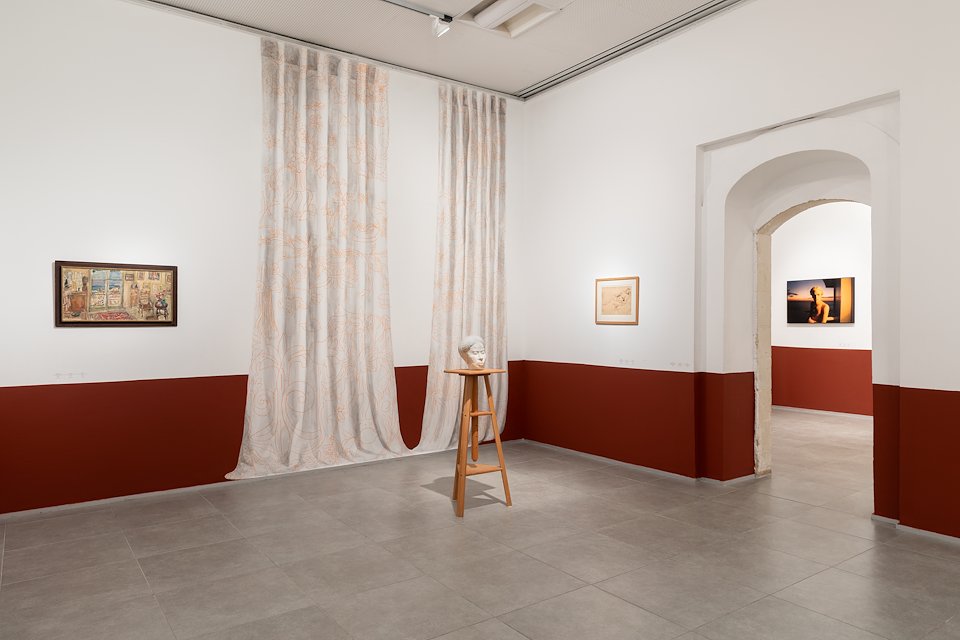
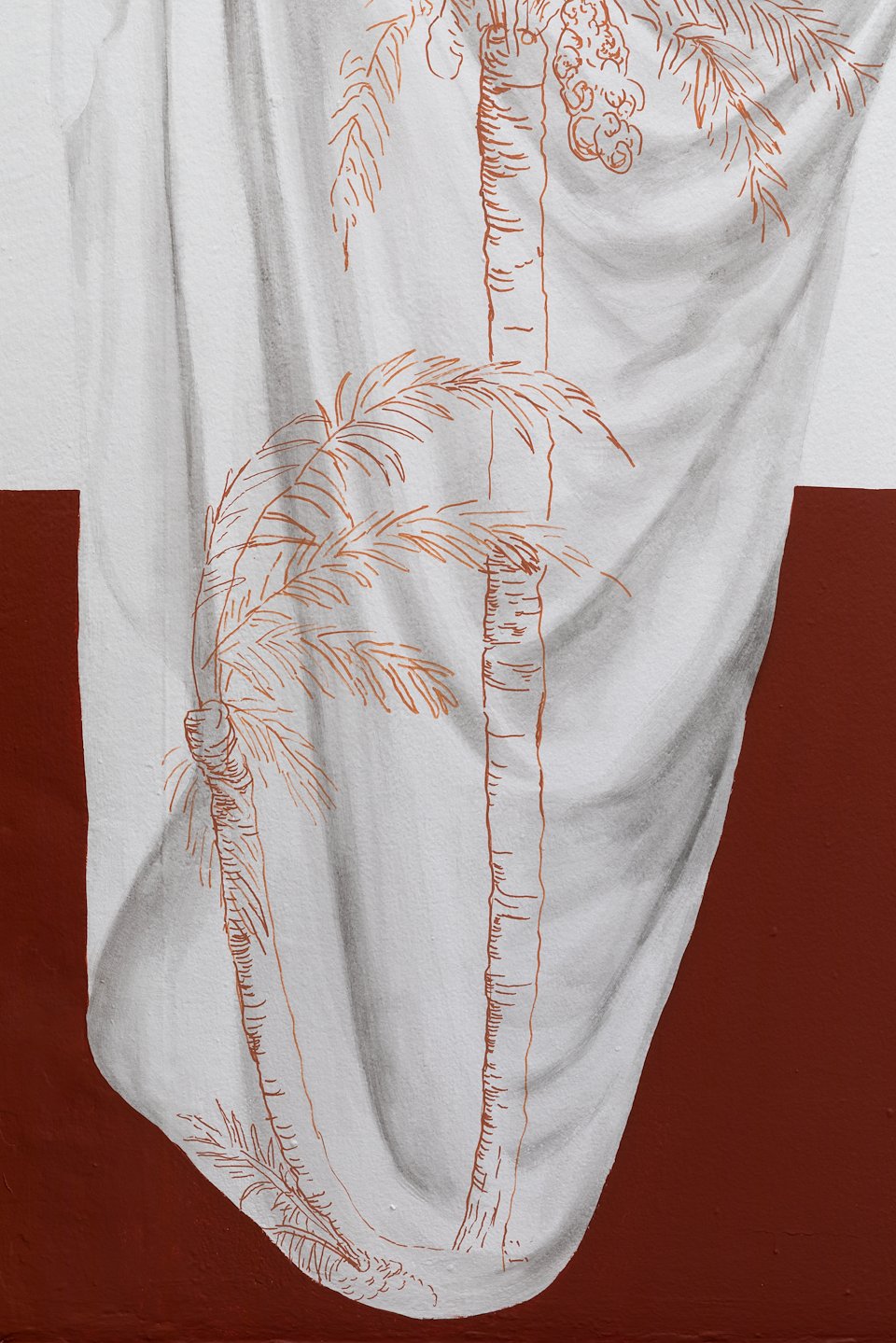
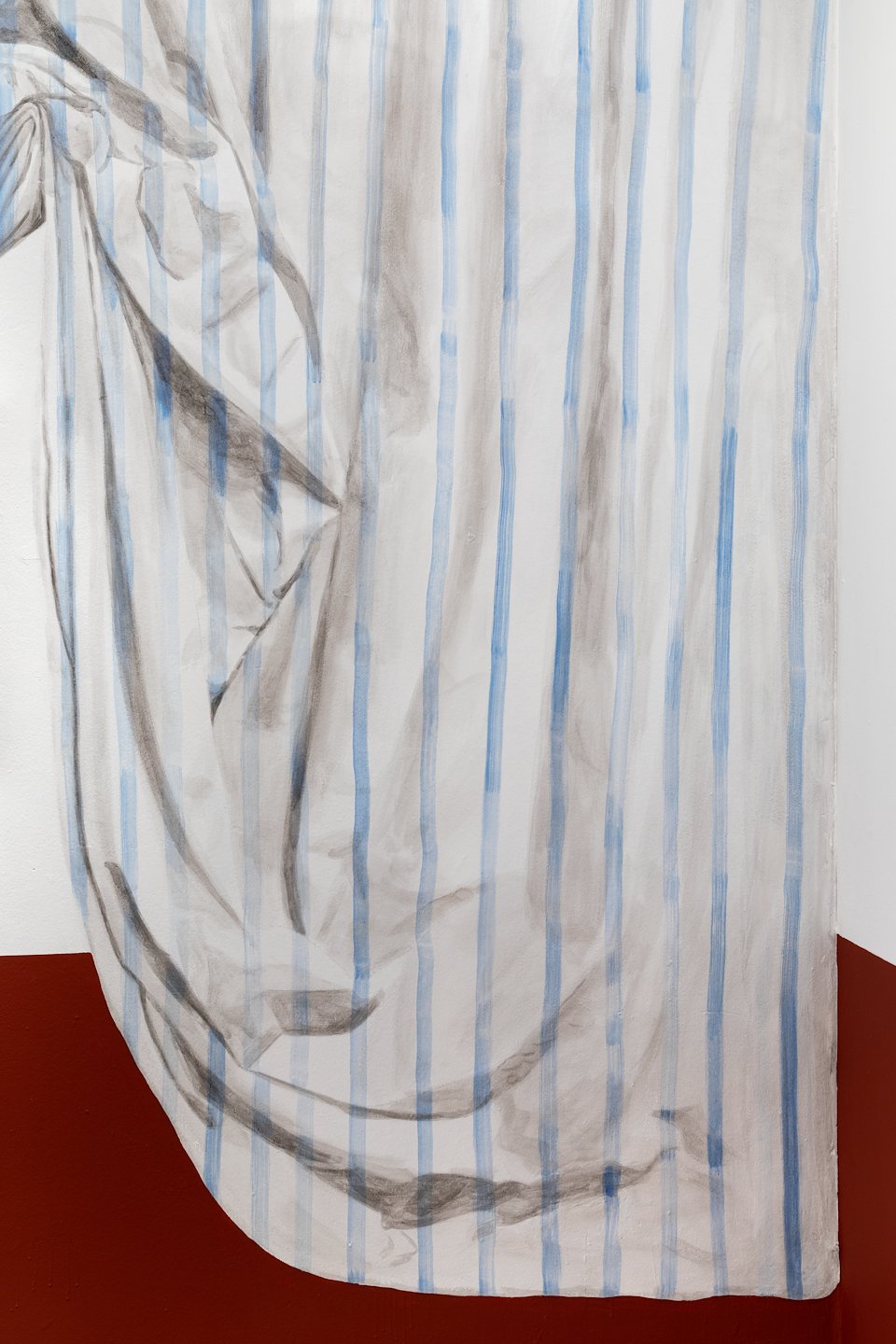
Curator: Ron Bartos
Gabriella Klein’s curtains and drapery murals are incorporated into the display of the historical collection as a compelling backdrop, a deceptive trompe-l’oeil, and an act of painting trickery. The encounter with artworks from the collection, which have been stowed away from the public for many years, imbues these murals with the symbolic significance of unveiling.
installation photos: Lena Gomon